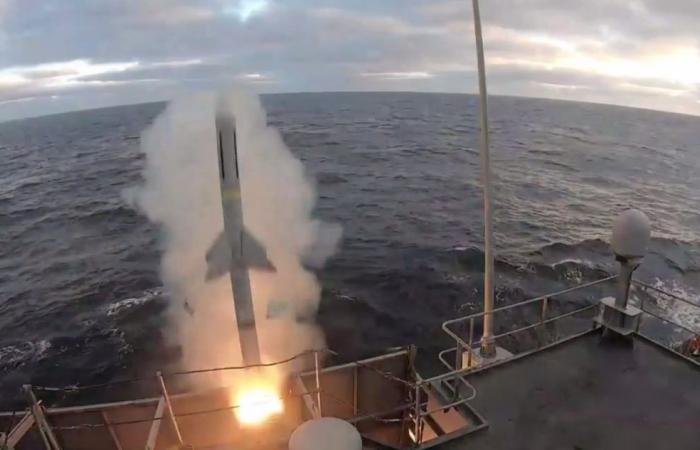Raytheon received a contract modification to provide engineering services and technical support for the missiles RIM-7 NATO Sea Sparrow of the multipurpose frigates class M and RIM-162 Evolved SeaSparrow Missile (ESSM) of the class anti-aircraft frigates Adelaide of the Chilean Navy.
The contract, which was awarded by the United States Department of Defense and which is an extension of a previous agreement, reaches 26.2 million dollars and combines the purchases of the United States Navy (99%) and the governments of Japan and Chile (1%), the latter within the framework of the Foreign Military Sales (FMS).
The US contracting agency is the Naval Sea Systems Command (Navsea), Washington DC Engineering and technical support services will be performed in Tucson, Arizona (73%); Portsmouth, Rhode Island (26%); and several other locations (each less than 1%) and are expected to be completed in December 2025.
NATO Sea Sparrow
He NATO Sea Sparrow It is a semi-active guided missile and point defense designed to shoot down aircraft and high-performance missiles. It was developed in the 1960s from the air-to-air missile. AIM-7E Sparrow as part of the short-range missile defense system (BPDMS) powered by the United States Navy for its surface units.
Denmark, Italy and Norway signed an agreement with the United States Navy in 1968 to use the Sea Sparrow on its ships by adapting digital fire control computers, radar technology and control consoles of European origin. The group presented its first prototype in 1971 and began production in 1973.
The success of the program NATO Sea Sparrow It attracted the interest of other European Navies, and the Netherlands, Belgium, Germany, Canada, Greece, Spain, Turkey, Portugal and Australia later joined the consortium. It has a multinational office overseen by a committee in charge of managing the acquisition and maintenance of the missile and associated systems.
The missile is 3.64 m long, 20.3 cm in diameter and 1 m in wingspan. It has a solid fuel rocket booster engine. Hercules MK-58 of Alliant TechSystemsIt has a range of 18.5 km and a speed of approximately 4,250 km/h. Its launch weight is 225 kg and it has a 40.5 kg ring-burst fragmentation warhead.
The class frigates M FF-15 White Admiral and FF-18 Almirante Riveros of the Chilean Navy, acquired used in 2004 from the Netherlands, have the vertical launcher MK-48 VLS which has capacity for 16 missiles NATO Sea Sparrow. The ships have the version RIM-7P which has a better capacity to attack low-flying aircraft and wave-breaker missiles. Its guidance system allows updates to be sent through rear-mounted antennas and provides more range and capability against surface targets.
ESSM
He Evolved SeaSparrow Missile (ESSM) It is an anti-aircraft and anti-missile missile for local zone defense that has a length of 3.6 meters and a weight of 280 kilos, of which 39 kilos correspond to its warhead. This system achieves a speed of Mach 4 and an effective range of 50 km.
He ESSM It was developed by Raytheon Missile Systems to replace the missile Sea Sparrow and its main advantages include its great maneuverability and supersonic speed. This missile has longitudinal wings and foldable fins to make sustained turns.
Under the project Bridge IVChile acquired from Australia in 2019 the anti-aircraft frigates class Adelaide FFG-11 Captain Prat (ex HMAS Newcastle) and FFG-14 Admiral Latorre (ex HMAS Melbourne). The incorporation considered a complete logistical package as well as technical training courses in the Oceanian country.
The units were built in Amecom (today BAE Systems Australia) and entered service in 1992 and 1993. They are 138.1 metres long, 13.7 metres wide, 4.5 metres deep and displace 4,267 tonnes. They have two gas turbines General Electric LM2500 of 41,000 shp and two auxiliary electric thrusters of 350 shp. They achieve a speed of 29 knots and a range of 4,500 nautical miles at 20 knots. The complement is 187 crew members.
Australia implemented the program on these frigates BE 1390also known as FFG Upgrade Project, which featured a new combat and fire control system with a revamped long-range air search radar, upgraded air defense missiles, and a new integrated hull and towed sonar suite. In this framework, the ships received a vertical launcher at the bow VLS MK 41 of Lockheed Martin equipped with eight missile cells ESSM.


